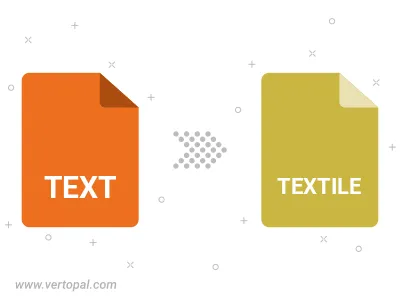Convert TEXT HADDOCK to TEXTILE
Convert TEXT HADDOCK markup documents to TEXTILE format, edit and optimize documents online and free.

The TEXT file extension, associated with Haddock Markup Language, is used for documentation in Haskell programming. Haddock is a tool for generating documentation from annotated Haskell source code. It uses a lightweight markup language, similar to LaTeX, to format the documentation. The history of Haddock dates back to its creation by Simon Marlow and others as part of the GHC (Glasgow Haskell Compiler) project. It has since become a standard tool in the Haskell community for creating comprehensive and readable documentation.
The TEXTILE file extension, an acronym for Textile Markup Language, is a lightweight markup language developed by Dean Allen in 2002. It converts plain text into structured HTML, making it useful for writing articles, forum posts, and documentation. Textile is known for its simplicity and readability, and it has influenced the development of other markup languages like Markdown.
Drag & drop any TEXT HADDOCK file from your device or click the Choose File button to proceed.
To customize TEXT HADDOCK to TEXTILE conversion, use the available tools before clicking the Convert button.
Wait a couple of seconds for the converter to do the hard job, then download your TEXTILE file.

To change TEXT HADDOCK format to TEXTILE, upload your TEXT HADDOCK file to proceed to the preview page. Use any available tools if you want to edit and manipulate your TEXT HADDOCK file. Click on the convert button and wait for the convert to complete. Download the converted TEXTILE file afterward.
Follow steps below if you have installed Vertopal CLI on your macOS system.
cd to TEXT HADDOCK file location or include path to your input file.Follow steps below if you have installed Vertopal CLI on your Windows system.
cd to TEXT HADDOCK file location or include path to your input file.Follow steps below if you have installed Vertopal CLI on your Linux system.
cd to TEXT HADDOCK file location or include path to your input file.